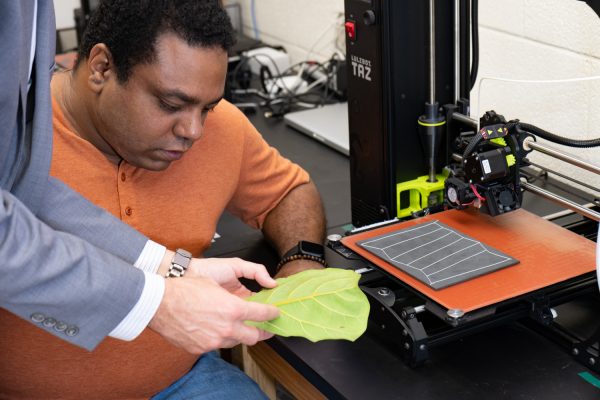As automobiles and aircraft push new boundaries, they require more energy and computing power, both of which generate an enormous amount of heat. Inspired by circulatory systems in living organisms, a research team led by CCEE’s Dr. Jason Patrick and colleague Dr. Ahmad Najafi (Drexel University), has developed a new method to cool the structural carbon-fiber composites used in these and other applications.
Patrick’s team is focused on advancing modern fiber-reinforced composites, which are both strong and lightweight compared to conventional structural materials like steel and concrete. Owing to their high strength-to-weight ratio and corrosion resistance, fiber-composites are becoming more prevalent in aircraft, automobiles, wind turbines, naval vessels, sporting goods and beyond. For example, the latest Boeing 787 Dreamliner is more than 50% composite by weight.

‘Next Generation’ thermal management materials
In addition to structural performance, the ability to regulate temperature is a critical aspect for many applications. To cool composite materials, the research team adapted an idea from nature – the use of micro-channels (i.e. vasculature) to provide conduits for fluid circulation. The flow of liquid coolant through the network of internal micro-channels provides a way to dissipate heat while maintaining the structural integrity of these composite materials. These next-generation, vascularized carbon-composites can be used in everything from aerospace vehicles, to battery packaging in electric or hybrid cars, and even supercomputer cooling systems.
This newfound potential lies not only in the advanced vascular system, but also the state-of-the-art computational design tool: hybrid topology/shape optimization (HyTopS). The HyTopS scheme is able to optimize the design of microvascular cooling systems in minutes on an ordinary personal computer; a feat that took Mother Nature many evolutionary cycles to perfect in living organisms.
Interdisciplinary and cross collegiate collaboration
The key to this recent success stems from an ongoing interdisciplinary collaboration between professors Patrick and Najafi. Najafi and his team spent the past few years formulating the underlying mathematics and mechanics for HyTopS with steadfast code development. Patrick and his graduate students built upon his expertise in composite vascularization (VaSC) to develop 3D printing techniques to construct the inverse network of microchannels within carbon-fiber composites.
Together, the team has created a novel computational/materials platform for integration with 3D printing, producing vascular designs that are not only optimal but also easy to manufacture.

“We’re only beginning to realize the potential of this latest breakthrough,” says Patrick. “While we focused this demonstration on active-cooling, we intend to explore multiple physical phenomena including structural mechanics and electromagnetics.”
Both Najafi and Patrick agree the success of this project is a result of their complementary vision and continued friendship after graduate school together at the University of Illinois at Urbana-Champaign. “Tackling these challenging interdisciplinary research problems takes the right mixture of minds, lots of time and dedication, along with some very talented graduate students and research support,” Patrick said.
“We hope that our exciting work can make modern materials perform better, structures and vehicles safer, and everyday life easier for society at large.”
Details of the research were recently published in the International Journal of Heat and Mass Transfer.
This work was funded by the Air Force Office of Scientific Research and Drexel University. In addition to Drs. Najafi and Patrick, Reza Pejman, from Drexel, and Sherif H. Aboubakr, William H. Martin, and Urmi Devi, from NC State; and Marcus Hwai Tik Tan from the University of Illinois Urbana-Champaign also contributed to this research.

